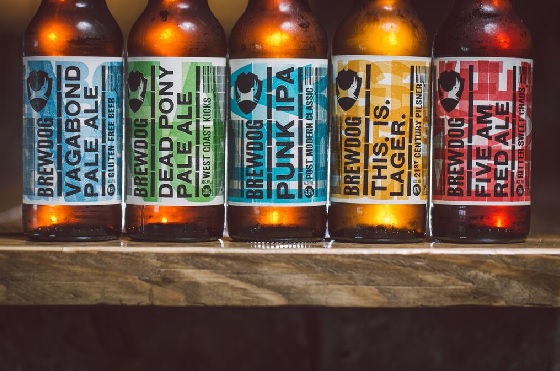Guest blog by David Edwards, business development manager at R Design
The UK craft beer market is showing little sign of slowing. It’s well documented that there are now more than 1,300 breweries in operation up and down the country (more per capita than any country in the world), each busting their pumps to quench the nation’s thirst for an alternative to the mainstream; ultimately our desire and love of ‘the craft’.
 But with so much ethanol in the ether, the biggest challenge facing the breweries is getting their voices heard above all the noise. Many of the fine stories behind these brands are failing to be told through their packaging.
But with so much ethanol in the ether, the biggest challenge facing the breweries is getting their voices heard above all the noise. Many of the fine stories behind these brands are failing to be told through their packaging.
Brands need an effective and emotive shorthand to tell their story simply and succinctly. Something that easily sums up the provenance, the marvelous ingredients, brewing expertise, tradition or whatever it is that they do differently. In short, they need to behave like brands do in any other category, rather than just being loud and different.
New research by Anglia Ruskin University supports this argument. Their study found that distinctiveness of beer bottle and label design is a poor predictor of beer choice.
Tim Froggett, senior lecturer in marketing at Anglia Ruskin University, said: “Distinctiveness and visual attention are not the same. An object may be distinctive simply because it is different from other objects surrounding it. And the factors creating distinctiveness are not necessarily the same as those driving attention, consideration and choice.”
Groundbreaking research
He added: “In crowded supermarket environments, shoppers direct attention to the centre of objects where they expect to find choice-related information such as product type, brand name or details of flavour characteristics”.
Breweries must take stock of this groundbreaking research and find a balance between communicating those all-important choice-related benefits alongside the core values and personality of their brand. The eternal rules of branding must be applied: stand out and stand for. Longevity is achieved through clear application of these rules and a dogged determination to stay one step ahead of the chasing pack.
This is easier said than done. When starting up a business there are inevitable limitations when it comes to investment in brand strategy and design. We spoke to several breweries that have launched over the past five years and found that many have commissioned friends or freelancers to create their identities.
This certainly seems to be the most cost-effective solution when starting out, but as sales and distribution channels increase so does the importance of having a considered and consistent brand strategy, pushing the brand beyond just a catchy name and quirky logo.
Case study: BrewDog

Previous BrewDog branding
BrewDog are the shining example when it comes to developing a commercially successful and engaging brand strategy. Their disruptive philosophy has been applied to every consumer touch-point since day one.
Then, in 2014, they redesigned their beer labels to better suit those busy retail environments Mr Froggett mentions above. The result? Better uniformity of the products, clearer identification of each variant and better shelf standout. They were also able to enhance that feeling of hand crafted through the use of traditional letter pressing techniques and subtle embossing on the labels.

Current BrewDog branding
To succeed, breweries must resist the temptation to follow design cues handed down by short-lived lifestyle trends, such as the current ‘hipster’ movement. We have spotted several that have fallen into this trap. The most successful brands in any category are those that can transcend cultural and geographic boundaries and simply communicate what it is that makes them special and relevant to their target audience.
Put as much love and craft into your brand communications as you do in your brewing process and you’ll leave your customers spellbound. Now that’s real witchcraft.



